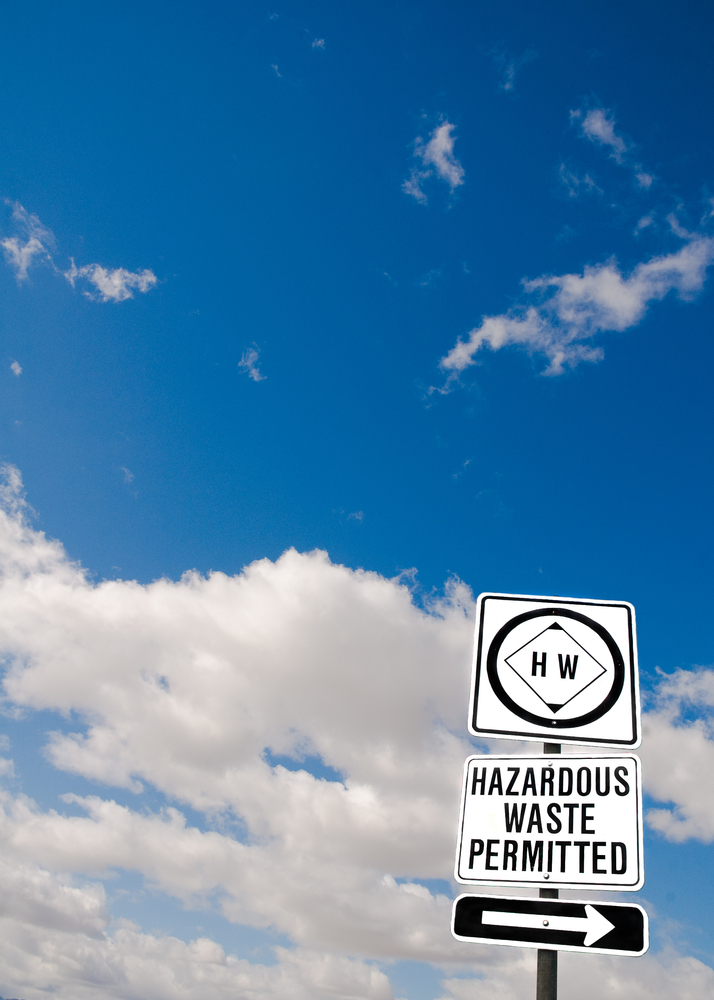 |
Surface Areas
Surface areas, such as walls, floors, and ceilings, must meet the following criteria:
- They must be constructed of man-made materials.
- They must have sufficient strength and thickness to be self-supporting and to support the waste contents, personnel, and equipment.
- Surfaces that come in contact with hazardous wastes must be chemically compatible with the hazardous waste in the building.
- Building design standards must be recognized by professional organizations generally recognized by the industry (e.g., the American Concrete Institute and the American Society of Testing Materials).
Forget expensive calls to lawyers and consultants. With Enviro.BLR.com, you get instant access, 24/7. Try it out today and get an EHS Recordkeeping Checklist, absolutely free. Download Now.
Primary Barrier
A primary barrier, such as a geomembrane covered by a concrete surface, must be constructed within the building to prevent the migration of hazardous constituents into the barrier. The primary barrier must be made of material that can withstand the movement of personnel, waste, and equipment during the operating life of the containment building and be appropriate to the physical and chemical characteristics of the waste being managed.
Doors and Windows
Doors and windows must be placed so as not to come into contact with waste. These openings must have dust controls to control fugitive dust emissions so that the doors and windows (and any other openings such as vents or cracks) exhibit no visible emissions. This state of no visible emissions must be maintained effectively at all times during routine operating and maintenance conditions, including when vehicles and personnel enter and exit the containment building.
Decontamination Area
An area must be designated within the containment building to decontaminate equipment, vehicles, and personnel.
Design Certification
A qualified professional engineer must certify that the containment building has been designed and constructed in compliance with the containment building standards.
Managing Hazardous Waste Containing Free Liquids
What are free liquids? Free liquids are liquids that readily separate from the solid portion of waste under ambient temperature and pressure. The presence of free liquids can be determined by the paint filter test, a visual examination, or other appropriate means.
Although containment buildings may not be used to manage liquid hazardous waste, hazardous waste containing free liquids may be managed in a containment building. Such containment buildings must have design features that are in addition to those required for all buildings. These additional standards for containment buildings used to manage hazardous wastes containing free liquids are also necessary if treatment to meet land disposal restrictions (LDRs) treatment standards requires the addition of liquids.
Primary Barrier
The design and construction of the primary barrier must prevent migration of hazardous constituents into the barrier. The primary barrier must be sloped to drain liquids to the liquid collection system.
Liquid Collection System
The containment building must have a liquid collection system that detects, collects, and removes, at the earliest practicable time, liquids accumulated on the primary barrier. It must be designed and constructed of materials that minimize the accumulation of liquid on the primary barrier.
Need an answer fast? Relax. Our editors guarantee a personalized response to your questions within 3 business days. Take a free trial of Enviro.BLR.com and see what everyone is talking about. For a limited time, also receive an EHS Recordkeeping Checklist. Download Now
Secondary Containment System
A secondary containment system must include a secondary barrier designed and constructed to prevent migration of hazardous constituents into the primary barrier. The secondary containment system must include a leak detection system and must be capable of detecting and collecting waste that migrates into the primary barrier at the earliest practicable time. In buildings where only certain areas are delineated for management of wastes containing free liquids, secondary containment is only required for these areas.
However, measures must be taken to prevent the release of liquids or wet materials into areas without secondary containment, and the facility’s operating log must have a written description of the operating procedures used to maintain the integrity of areas without secondary containment. In view of the high cost of remediation, the EPA recommends that the entire containment building be provided with secondary containment to guard against unanticipated releases.
Whether you need facts about emergency planning or some other important environmental issue, Enviro.BLR.com provides all the information you need, 24/7.
This essential online environmental management tool puts practical RCRA, CAA, CWA, hazardous waste regulatory analysis and activity, news, and compliance tools at your fingertips whenever you need it. With instant access, your expensive calls to lawyers and consultants, and the risk of costly mistakes from "not knowing," are a thing of the past.
A basic subscription includes detailed environmental information and tools on federal EPA and 1 state. All 50 states are available. Full text regulations are also available as a low-cost option.
Your subscription includes:
- State-specific regulatory analysis
- Continuous regulatory updates—more than 500 posts each month
- Hundreds of compliance and training tools
- Environmental best practice and white papers
- "Site Navigator," a powerful, easy-to-use search
- 3-day expert answers to your questions from our editors
If you’d like to personally evaluate Enviro.BLR.com and see how it can help you comply with environmental requirements, we’ll be happy to provide a no-cost, no-obligation tour of the website. Just let us know, and we’ll arrange it.
